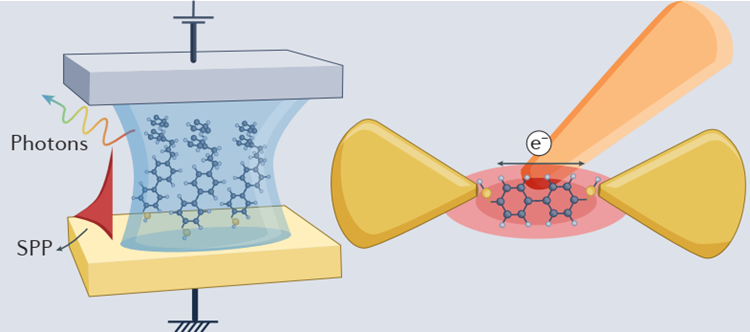NKU Scholar Invited to Publish a Cover Paper in "Nature Reviews Chemistry"—Regarding the Principle and Applications of Plasmonic Phenomena in Molecular Junctions
Recently, Professor Xiang Dong from the College of Electronic Information and Optical Engineering of Nankai University, Professor Elke Scheer from University of Konstanz, Professor Christian A Nijhuis from University of Twente, Professor Takhee Lee from Seoul National University, along with other co-authors, were invited to jointly publish a cover paper titled Plasmonic Phenomena in Molecular Junctions: Principles and Applications in Nature Reviews Chemistry, which presented the latest research progress in this field.

According to Xiang Dong, highly adjustable surface plasmons can be excited between electrodes by applying bias voltage or light to further regulate and control the transport behavior of electrical charges in molecular junction. On the contrary, the dielectric properties of the molecule itself and the electron transport behavior in molecular junction also have a reverse regulation effect on the surface plasmon mode.
Wang Maoning, the first author of the paper as well as a doctoral student of the College of Electronic Information and Optical Engineering of Nankai University said, "we have not only made systematic classifications and a detailed introduction of the typical plasmon phenomenon and the characterization means of molecular junctions with different geometrical morphologies, but also provided a comprehensive overview of the specific mechanisms and concomitant effects of the interaction between plasmon and molecular junction. Further more, we discussed the correspondence between the coupling effect (excitons in junction - plasmon) intensity and the line form of scattered spectrums when projecting light to the molecular junction."
In the summary and prospect section of this paper, Wang Maoning, Xiang Dong and other co-authors further presented the future assumption of this interdisciplinary frontier field which integrated the latest progress in physics, chemistry, material and engineering, and can open up a new route for the exploration of the features and applications of new-type nanometer photoelectron devices.
Paper link: https://www.nature.com/articles/s41570-022-00423-4
(Edited and translated by Nankai News Team)









